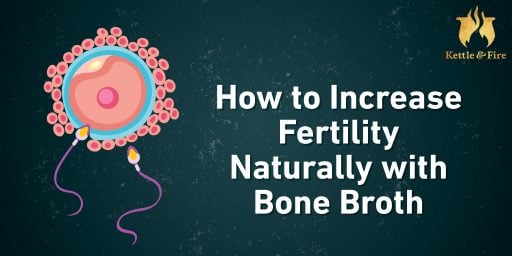Intermittent Fasting: Your Complete Guide

Since ancient history, humans have been conditioning themselves to avoid certain things in a ritualistic way, often for the betterment of self and society. In today’s modern world, we attempt to continue that trend with a wide array of month-long challenges:
Dry January.
Sweet-Free September.
No-Shave November.
Frequently joining the list of “New Year, New Me” goals is Intermittent Fasting – a cyclical method of eating that rotates between periods of food and no food, carrying with it a hefty list of positive effects.
Although it’s a newer topic in many households, Intermittent Fasting is not foreign to the health and wellness space, nor to humankind as a whole.
For an undocumented amount of time, people have engaged in the act of fasting for a multitude of reasons. Some do it while seeking spiritual enlightment or for mental and emotional clarity. Others do it for simpler, more biological benefits: to help detoxify and reset the body’s natural processes. (Espcecially after an overindulgent holiday, amiright?)
But does it make sense?
Is it really effective?
How LONG do I have to wait before I can have a snack?

Before you chain lock the fridge and throw away all of the food in your pantry…we’re here to answer the questions above, plus many more.
This digital guide will help you learn what Intermittent Fasting really is and how you can follow proven methods, avoid common mistakes, and emerge on the other side feeling better than ever.
Sound good? Okay, let’s get started!
Here’s what we’ll be covering:
- What the heck is Intermittent Fasting?
- What’s the BIG secret?
- Benefits, but also some of the bad things.
- The best ways to avoid the bad things.
- People who should definitely not do this.
- Other thoughts.

The Basics of Intermittent Fasting
In short, Intermittent Fasting involves not having food for a set period of time.
Doesn’t sound too complicated, does it?
In fact, you’ve probably done it before without even realizing it! You already fast for a period of time while sleeping. And, on those busy days where you realize you haven’t had lunch until 3pm…you’ve just completed an involuntary Intermittent Fast.
But it’s not just about forgetting to eat. In fact, proper fasting (especially for a window of more than 12 hours) involves strategy – and a willingness to complete it – in order to have lasting impact.
Lasting impact can range from: acheiving lean muscle or better weight management, enhancing energy, boosting motivation and stamina, and/or improving cognitive function.
The Fed State vs. The Fasted State
When you eat every few hours, you’re in a “fed” state, which is when the body is busy digesting, absorbing, and distributing nutrients from meals. Accelerated fat burning isn’t the #1 priority here, but the body seems adequately fueled since this is typically our normal mode. Most of us remain in the fed state during the day, aside from when we’re sleeping.
The absence of food during an Intermittent Fast sends us into a “fasted’ state, which is when processes in the body begin to change, and the focus centers more around detoxification, rejuvenation, adaptation, and – notably – a reset.
Liquids & Fasting
During the fasting window (the period of time without food), you will likely consume liquids, such as water, herbal tea, and/or bone broth. Some people swear by the addition of black coffee and/or juices in the lineup. Others prefer to add electrolytes to their water. Whatever the case, we leave the liquid window open to interpretation and what works best for you.

It may be frustrating to read that there’s a lot of wiggle room when it comes to this part, but even the experts can’t agree.
Some recommend low-calorie green drinks and supplements to help keep vitamin and mineral intake consistent, while others believe only water should be consumed. Like many topics in the health realm, the rules around Intermittent Fasting are subjective, depending on who you ask.
But instead seeing it as a negative, we view this as an added perk: there’s more than one way to spin a fast!
The Fasting Timeline

To understand the timeline of a fast, all you need is a degree in algebra.
Just kidding. All it takes is some minor addition & subtraction (carry the one), plus a couple of key phrases to note:
1. The Fasting Window: we mentioned above that this is the amount of hours per day you’ll go without food.
2. The Duration: this is the number of days in a row that you’ll engage in Intermittent Fasting.
The most common fasting windows are 12, 14, 16, or 18 hours.
So, let’s say you’re doing a 12-hour fasting window. Since there are 24 hours in a day, this means you’ll also have a 12-hour eating window (which is the time allotted for meals before you begin your fast).
Using this example, you could potentially begin your eating window at 7am and end it at 7pm. You would then fast between 7pm and 7am the next day. Wash, rinse, repeat.
Alright, but that seems kind of basic.
We started with an easier one for all the fasting newbies out there. Not to mention the fact that ending an eating window at 7pm can be difficult for late night snackers.
Some methods and timelines are definitely more intense than others – with durations of windows that can last up to a week. But the beauty of Intermittent Fasting is that you get to choose and experiment, adjusting as needed along the way.
This flexibility will not only allow you to customize a fast to fit your lifestyle, but it can also help you discover which benefits you hope to gain and how you can achieve your physical, mental, and/or emotional goals.
And the BIG Secret is…
While there are many ways to complete a fast, there’s one common denominator among all fasters alike, novice or not.
It can spell disaster for the faster, especially if you’re the type of person who is prone to brief bouts of mindless snacking, endless cycles of indulgent eating, or what we like to call “Hangry Decision-Making”.
What’s this common thread among fasters?
The NAME alone can derail even the strongest of mindsets.
Think about it: the term “fasting” literally means to abstain, or to go without. By definition alone, it already puts the particpant in a mindset of scarcity or an environment of restriction. This can mean that the act of fasting, while beneficial, can often seem like punishment.
Instead, we decided to make a slight adjustment in our approach – and it has made all the difference.
One Small Change
If you’re struggling with the thought of going any amount of time without having a meal, sneaking a snack, or even looking at food…here’s a paradigm shift for ya:
Intermittent Fasting is really just Intermittent EATING.
With this new wording, the challenge becomes less about the window of “going without” and more about the window of “having”. And instead of the fasting window feeling like punishment, the mealtime window becomes something to look forward to; a positive reward for completing the challenge.
When it comes to fasting – or eating intermittently – the key to success is all in how you view the process…and, as we have found, what you call it.
Benefits of Intermittent Fasting (And Why it Can Be Tricky)
The pros can definitely outweigh the cons when it comes to Intermittent Fasting, as it can help:

✔️ Promote weight management
✔️ Increase lean muscle mass
✔️ Contribute to hormonal balance
✔️ Unlock energy centers
✔️ Enhance cell stress responses
✔️ Reduce oxidative stress & inflammation
✔️ Eliminate or minimize food cravings
✔️ Encourage mental focus & clarity
…Just to name a few.

Now, here’s the tricky part: women are naturally sensitive to signs of starvation, so intermittent fasting for them can be a whole different beast.
When the female body senses it’s headed towards famine, it can increase the production of the hunger hormones, ghrelin and leptin, which signal the body that you need to eat.
This can have effects on the body’s protective mechanisms, which kick in when it detects that there isn’t enough food for survival. These protective instincts can cause hormonal changes, sleep irregularities, anxiety, and more.
The good news?
Most of these things only happen in extreme cases, though it’s good to be aware of the possibilities so you can adjust as needed during your fast. Many women approach Intermittent Fasting in a relaxed way, with briefer timeframes so as not to disturb their natural feminine biology.
The Best Methods for Women

So, what exactly is a relaxed approach to Intermittent Fasting? Here are some tips from trusted resources:
✔️ The ideal fasting window for women is around 12 to 16 hours.
✔️ Never fast for a window of more than 24 hours.
✔️ Try not to fast on consecutive days during your first 2-3 weeks of fasting
(for instance, engage in your fasting windows every other day instead of multiple days in a row.)
✔️ Drink plenty of fluids, especially if you are new to fasting (bone broth, herbal tea, water, etc.)
✔️ On fasting days, only engage in light exercise such as yoga, walking, or gentle stretching.
Options for Intermittent Fasting
There are several different Intermittent Fasting methods, so we compiled a list of the most popular ones for women:
- Crescendo Method
The Crescendo Method is one of the best ways to ease into intermittent fasting without shocking the body or aggravating hormones. It doesn’t require you to fast everyday, but instead encourages you to engage in a fast a few days per week, skipping days in between.
Fasting Duration: 1 Day, 2-3x per week (example: Mon/Wed/Fri, or Tues/Thurs)
Fasting Window: 12-14 hours
Eating Window: 10-12 hours - 16/8 Method
The 16/8 Method, sometimes called the “Leangains Method” is another brief intermittent fasting routine that’s used specifically for targeting weight management and to improve lean muscle mass (a.k.a. your gains!).
Fasting Duration: 1 Day, 3x per week for the first couple of weeks, then adjusted as needed.
Fasting Window: 16 hours
Eating Window: 8 hours - 24 Hour Protocol
The 24 Hour Protocol, also known as “Eat-Stop-Eat”, involves a 24-hour fast, once or twice a week. You can choose the time you start fasting, but many people prefer to fast from 8pm to 8pm the following day, or begin their fast after breakfast.
Fasting Duration: 1 Day, no more than 2x per week with NO consecutive days
Fasting Window: 24 hours
Eating Window: 0 hours
When Should You Avoid Intermittent Fasting?
Intermittent Fasting isn’t a good fit for everyone. You should definitely not consider this practice if you are:
- Pregnant
- Nursing
- Under chronic stress
- Have a previous history of eating disorders
- Have difficulty sleeping
Additionally, the method is meant to complement a healthy diet and lifestyle – not act as a way to remedy five days of eating nutritionally-bankrupt foods, such as refined sugar, processed foods, and/or fast foods.
Please adhere to your medical professional’s advice if you are unsure whether or not Intermittent Fasting is right for you.
Final Thoughts on Intermittent Fasting for Women
This probably won’t come as a shock, but we’ll say it anyway: no two women are created equally. Unfortunately, this means Intermittent Fasting may work incredibly well for some and not at all for others.
But don’t go into it with a mindset of failure! You’ll never know if you don’t try, right?
If you do decide to give it a go, here are some valuable last words on the subject:
- Plan Carefully. Starting a fast the day before a huge presentation at work might not be the best idea.
- Be Open-Minded. If something isn’t working for you, don’t be afraid to do what does!
- Listen to Your Body. We cannot stress this enough: if you feel like something is truly wrong, there probably IS. Please don’t push yourself too far.
- Stock Up on the Right Stuff. Be sure to have good, whole foods on deck for your eating windows and, if you need help in the bone broth department to keep you fueled during your fast…we might know where you can find the best liquid gold. (wink.)
At the end of the day, we just want you (and all the members of our Kettle & Fire famly) to prioritize your physical, mental, and emotional well-being – and we’ll be there to support you, every step of the way. Cheers!










